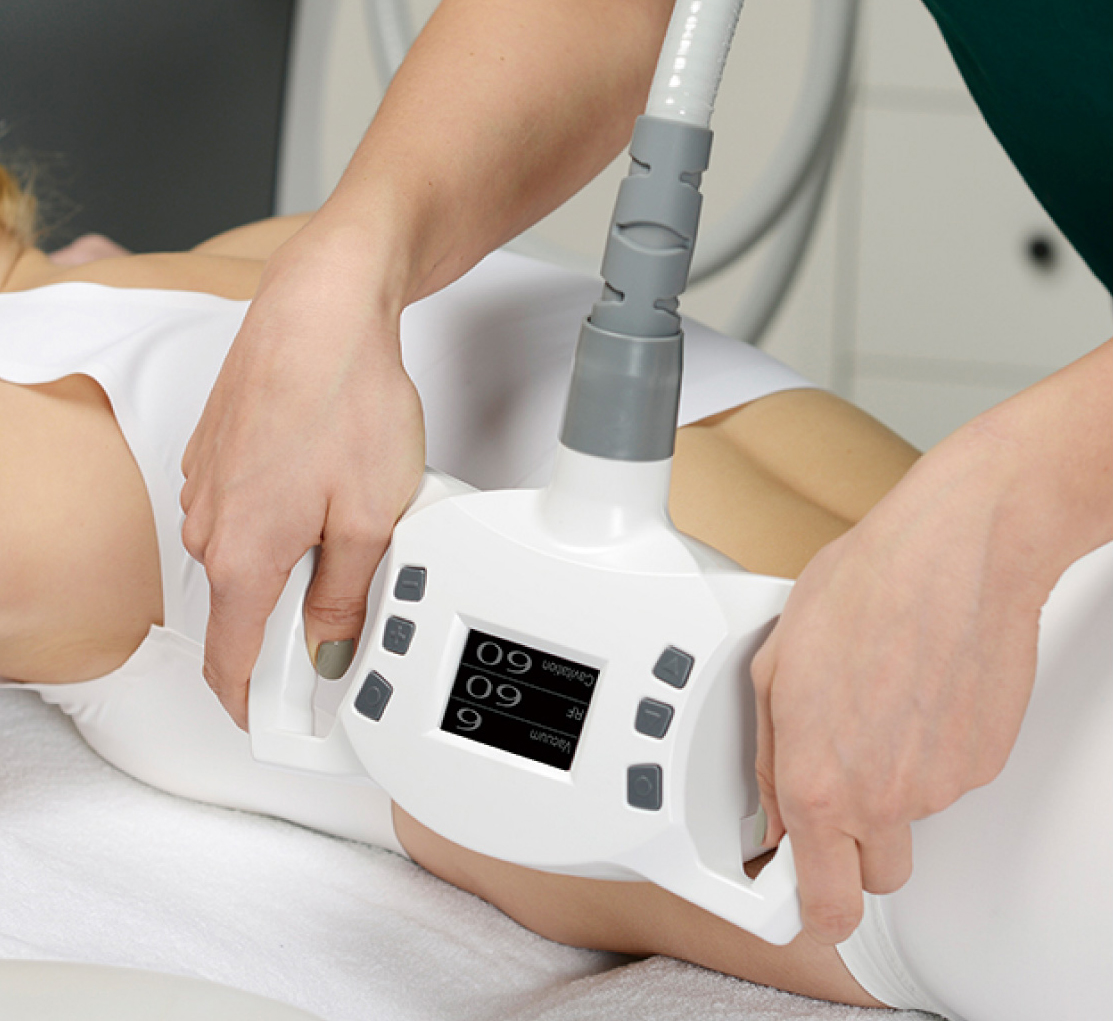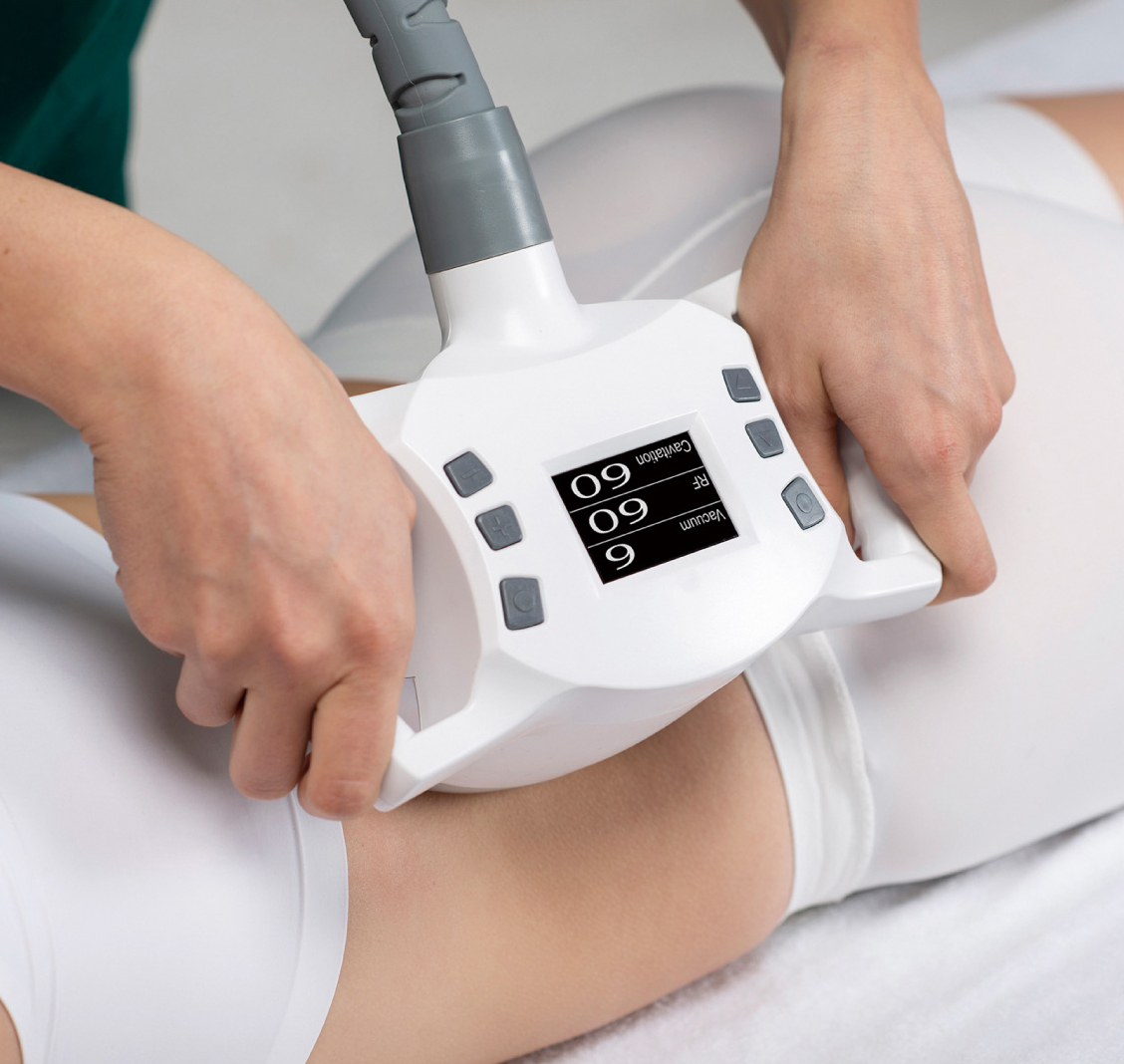Cryolipolysis Machine Exploring the Science Behind Adipocyte Freezing
Cryolipolysis, commonly referred to as adipocyte freezing, is a sophisticated medical procedure designed to target and diminish fat cells through the application of controlled cooling. Originally conceived as a less invasive alternative for fat reduction, Cryolipolysis capitalizes on the principle that fat cells exhibit greater sensitivity to cold temperatures compared to other cellular structures within the body. By subjecting adipose tissues to sub-zero temperatures, this treatment effectuates selective destruction of fat cells while sparing surrounding tissues from damage. Subsequently, these dead fat cells are naturally eliminated by the body’s metabolic processes over time. The non-invasive nature and efficacy in localized fat reduction have positioned Cryolipolysis as an increasingly popular choice among patients seeking body contouring solutions.

Mechanism of Action
The mechanism of Cryolipolysis involves a carefully controlled process of cooling the targeted fat cells to a temperature that triggers their natural death, or apoptosis. This is achieved by applying a specialized device to the skin, where it cools the underlying fat cells without affecting the skin or other structures. When the fat cells are exposed to these low temperatures, ice crystals form within the cells, leading to cellular damage and apoptosis. Over the course of several weeks to a few months, the body’s lymphatic system gradually processes and removes the dead fat cells, resulting in a reduction of the fat layer in the treated area.
The Cryolipolysis Machine
Introduction to the Device
The Cryolipolysis machine is a sophisticated piece of medical equipment designed specifically for the Cryolipolysis procedure. It consists of a control unit, applicators of various sizes and shapes, and a refrigeration system capable of rapidly achieving and maintaining the necessary temperatures for effective fat cell destruction. The applicators are designed to fit different areas of the body, such as the abdomen, thighs, and arms, ensuring precise and targeted treatment. The device’s user-friendly interface allows healthcare professionals to customize the treatment parameters based on the patient’s individual needs and the specific area being treated.
Technology Behind the Machine
The advanced technology integrated into the Cryolipolysis machine enables it to deliver consistent and effective results. One of the most critical components is the refrigeration system, which utilizes thermoelectric cooling or cryogen-based systems to maintain the optimal temperature for fat cell destruction. The device also includes sophisticated sensors and safety mechanisms to monitor and regulate the temperature, ensuring that it remains within the effective range without causing harm to the skin or other tissues. Additionally, the applicators are often equipped with a vacuum mechanism that draws the targeted tissue into the applicator, ensuring close contact and uniform cooling.
The Cryolipolysis machine’s technology is continually evolving, with ongoing research and development efforts aimed at enhancing its efficacy and safety. Innovations such as real-time monitoring of tissue response, improved applicator designs, and enhanced cooling algorithms are all contributing to the advancement of this non-invasive fat reduction method. As a result, Cryolipolysis machines have become a popular choice for patients seeking to reduce stubborn fat deposits without the risks and recovery time associated with surgical procedures.
Further Details
The machine’s precision and controllability are integral to its success, allowing practitioners to administer highly specific treatments that conform to the contours of the body. This specificity not only maximizes the effectiveness of the fat reduction but also minimizes potential side effects. The combination of thermal technology and vacuum assistance ensures an even distribution of cold, augmenting the process’s efficiency.
In addition, the ergonomics of the Cryolipolysis machine have been designed to accommodate both patient comfort and practitioner ease of use. The applicators are constructed to fit various body shapes and sizes, enhancing their versatility and applicability. Moreover, the user-friendly interface streamlines the procedure, enabling healthcare providers to focus on delivering optimal patient care.
Cryolipolysis Machine is now widely used in the beauty industry. Since its inception in 2003, Anchorfree has focused on the manufacturing of aesthetic and medical aesthetic devices based on laser, light-based, RF, vacuum, ultrasound, and EMS technologies. We are committed to developing and delivering high quality products with cutting-edge technology to our global partners and customers.
Applications of Cryolipolysis in Medicine
Clinical Uses
Cryolipolysis has found widespread clinical applications, particularly in the field of cosmetic dermatology. It is primarily used for body contouring and targeted fat reduction in areas such as the abdomen, thighs, flanks, arms, and under the chin. The non-invasive nature of the procedure makes it an attractive option for patients who are unwilling or unable to undergo surgical procedures such as liposuction. Beyond cosmetic applications, Cryolipolysis is also being explored for therapeutic uses in treating medical conditions like lipomas and certain forms of benign tumors. These clinical uses highlight the versatility and growing acceptance of Cryolipolysis as a beneficial medical procedure.
Advantages over Traditional Methods
One of the primary advantages of Cryolipolysis over traditional fat reduction methods is its non-invasive nature. Unlike surgical procedures, Cryolipolysis does not require incisions, anesthesia, or extended recovery periods. Patients can typically return to their normal activities immediately following treatment. Additionally, the selective nature of cold-induced fat cell death means that surrounding tissues are largely unharmed, reducing the risk of complications and post-operative pain. Another significant advantage is the gradual nature of fat cell removal, which allows for a more natural-looking contour and avoids the abrupt changes often associated with surgical fat removal.
Scientific Research on Adipocyte Freezing

Recent Studies
Recent scientific research on adipocyte freezing has focused on understanding the mechanisms of cell death, optimizing treatment protocols, and expanding the therapeutic applications of Cryolipolysis. Studies have demonstrated the effectiveness of controlled cooling in inducing selective fat cell apoptosis and subsequent removal from the body. Research is also investigating optimal temperature ranges and treatment durations to maximize efficacy while ensuring patient safety. Innovative cooling techniques and applicator designs are continually being tested in clinical trials to improve outcomes and enhance patient experiences. Additionally, there is ongoing research into the molecular responses of adipocytes to freezing, which could lead to further advancements in the procedure.
Future Directions in Research
The future of research in Cryolipolysis appears promising, with several potential avenues for exploration. Scientists are investigating the integration of Cryolipolysis with other fat reduction therapies to enhance overall outcomes. Combining Cryolipolysis with techniques such as radiofrequency or ultrasound may offer synergistic effects, improving fat reduction and skin tightening. Furthermore, advancements in imaging technologies are enabling more precise assessment of treatment areas, potentially leading to personalized treatment plans. Researchers are also exploring the use of Cryolipolysis for metabolic disorders and other medical conditions beyond cosmetic improvements. These future directions underscore the ongoing evolution and expanding potential of Cryolipolysis technology.
Through many years of operation, Anchorfree has formed an experienced and talented research and development teams. We will be continuously focused to develop the products with strong technical advantages and seek independent innovation and provide a high-class services for our partners and customers around the world.
Regulatory Aspects and Safety Standards
Approval Processes and Guidelines
The regulatory approval process for Cryolipolysis machines involves rigorous testing to ensure their safety and efficacy. Regulatory bodies such as the U.S. Food and Drug Administration (FDA) and their international counterparts evaluate the devices based on clinical trial data, mechanical specifications, and user safety features. Guidelines are established to standardize treatment protocols, ensuring consistency and safety across different practitioners and settings. These regulatory processes are essential for maintaining high standards of patient care and fostering trust in the technology. Compliance with these guidelines is mandatory for manufacturers and healthcare providers, emphasizing the importance of patient safety and effective treatment.
Ensuring Patient Safety
Ensuring patient safety is paramount in the application of Cryolipolysis. The devices are equipped with multiple safety mechanisms, including real-time temperature monitoring and automatic shut-off features, to prevent skin damage or other adverse effects. Training programs for healthcare providers are crucial to ensure proper technique and adherence to safety protocols. Additionally, patient screening and consultation processes are implemented to identify any contraindications or factors that may affect treatment outcomes. Continuous post-market surveillance and reporting systems help detect and address any emerging safety concerns, further ensuring the well-being of patients undergoing Cryolipolysis.
Conclusion
Cryolipolysis machines represent a significant advancement in the field of non-invasive fat reduction and body contouring. Their ability to selectively target and eliminate fat cells without the need for surgery offers a highly appealing alternative for patients. The continuous development and refinement of Cryolipolysis technology have expanded its clinical applications, making it a versatile tool in both cosmetic and therapeutic medicine. Rigorous scientific research and regulatory oversight ensure that the technology meets high standards of safety and effectiveness. As Cryolipolysis continues to evolve, it is poised to make an even greater impact on modern medicine, providing patients with safe, effective, and innovative options for fat reduction and beyond.







